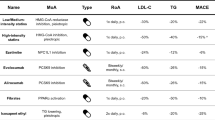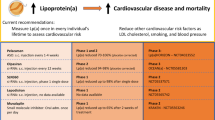Abstract
Oxidized low-density lipoprotein (ox-LDL) plays a key role in the progression of atherosclerosis and diabetes complications. The aim of this study was first, to evaluate the association between ox-LDL and diabetes duration, and second, to examine serum level of ox-LDL in patients with prolonged diabetes and a desirable LDL-cholesterol level. A total of 36 type-2 diabetic patients with a diabetes duration of more than 5 years, 36 newly diagnosed diabetic patients, and 36 age-, sex- and BMI-matched healthy participants were recruited. Healthy participants and newly diagnosed patients were not receiving any treatment. All patients with prolonged diabetes had desirable LDL-cholesterol levels (<100 mg/dL), according to the adult treatment panel-III guidelines. While LDL-cholesterol was significantly lower in patients with diabetes duration >5 years, in comparison to newly diagnosed patients (P < 0.01), ox-LDL was significantly higher in patients with prolonged diabetes (P < 0.001). The ox-LDL-to-LDL ratio was dramatically higher in patients with diabetes duration >5 years in comparison to newly diagnosed patients and healthy participants (P < 0.001). Ox-LDL was significantly associated with diabetes duration (r = 0.519, P = 0.001). In multivariate analysis, this association remained significant (β = 0.501, P = 0.003) after adjustment for potential confounders. In conclusion, this study showed that the serum ox-LDL level increases with the length of diabetes, even though the patients’ LDL-cholesterol level is maintained at a desirable level. Our findings highlight that possibly more attention should be focused on markers of oxidative stress in the management of lipids in diabetic patients.


Similar content being viewed by others
Abbreviations
- ANOVA:
-
Analysis of variance
- AGE:
-
Advanced glycosylated end-products
- ATP III:
-
Adult treatment panel III
- BMI:
-
Body mass index
- CV:
-
Coefficient of variant
- ELISA:
-
Enzyme-linked immunosorbent assay
- GFR:
-
Glomerular filtration rate
- HDL-cholesterol:
-
High density lipoprotein-cholesterol
- HPLC:
-
High-pressure liquid chromatography
- LDL-cholesterol:
-
Low density lipoprotein-cholesterol
- OR:
-
Odds ratio
- Ox-LDL:
-
Oxidized LDL
- SEM:
-
Standard error of mean
- TG:
-
Triglycerides
References
Renie G, Maingrette F, Li L (2007) Diabetic vasculopathy and the lectin-like oxidized low-density lipoprotein receptor-1 (LOX-1). Curr Diabetes Rev 3:103–110
Brownlee M (2005) The pathobiology of diabetic complications: a unifying mechanism. Diabetes 54:1615–1625
Wei W, Liu Q, Tan Y, Liu L, Li X, Cai L (2009) Oxidative stress, diabetes, and diabetic complications. Hemoglobin 33:370–377
Piarulli F, Lapolla A, Sartore G, Rossetti C, Bax G, Noale M, Minicuci N, Fiore C, Marchioro L, Manzato E, Fedele D (2005) Autoantibodies against oxidized LDLs and atherosclerosis in type 2 diabetes. Diabetes Care 28:653–657
Rashidi A, Nakhjavani M, Esteghamati A, Asgarani F, Khalilzadeh O, Abbasi M, Safari R (2009) Association between oxidant/antioxidant markers and proteinuria in type 2 diabetes: results in 142 patients. J Nephrol 22(6):733–738
Nakhjavani M, Esteghamati A, Khalilzadeh O, Asgarani F, Mansournia N, Abbasi M (2009) Association of macroalbuminuria with oxidized LDL and TGF-beta in type 2 diabetic patients: a case-control study. Int Urol Nephrol [Epub ahead of print]
Veiraiah A (2005) Hyperglycemia, lipoprotein glycation, and vascular disease. Angiology 56:431–438
Woodman RJ, Watts GF, Playford DA, Best JD, Chan DC (2005) Oxidized LDL and small LDL particle size are independently predictive of a selective defect in microcirculatory endothelial function in type 2 diabetes. Diabetes Obes Metab 7:612–617
Silverstein RL (2009) Inflammation, atherosclerosis, and arterial thrombosis: role of the scavenger receptor CD36. Cleve Clin J Med 76(Suppl 2):S27–S30
Silverstein RL (2001) Executive summary of the third report of The National Cholesterol Education Program (NCEP) expert panel on detection, evaluation, and treatment of high blood cholesterol in adults (Adult Treatment Panel III). JAMA 285:2486–2497
Rosenson RS (2004) Statins in atherosclerosis: lipid-lowering agents with antioxidant capabilities. Atherosclerosis 173:1–12
Bredie SJ, de Bruin TW, Demacker PN, Kastelein JJ, Stalenhoef AF (1995) Comparison of gemfibrozil versus simvastatin in familial combined hyperlipidemia and effects on apolipoprotein-B-containing lipoproteins, low-density lipoprotein subfraction profile, and low-density lipoprotein oxidizability. Am J Cardiol 75:348–353
American Diabetes Association (2008) Diagnosis and classification of diabetes mellitus. Diabetes Care 31(Suppl 1):S55–S60
Lapointe A, Couillard C, Piche ME, Weisnagel SJ, Bergeron J, Nadeau A, Lemieux S (2007) Circulating oxidized LDL is associated with parameters of the metabolic syndrome in postmenopausal women. Atherosclerosis 191:362–368
Holvoet P, Lee DH, Steffes M, Gross M, Jacobs DR Jr (2008) Association between circulating oxidized low-density lipoprotein and incidence of the metabolic syndrome. JAMA 299:2287–2293
Nakhjavani M, Esteghamati A, Asgarani F, Khalilzadeh O, Nikzamir A, Safari R (2009) Association of oxidized low-density lipoprotein and transforming growth factor-beta in type 2 diabetic patients: a cross-sectional study. Transl Res 153:86–90
Njajou OT, Kanaya AM, Holvoet P, Connelly S, Strotmeyer ES, Harris TB, Cummings SR, Hsueh WC (2009) Association between oxidized LDL, obesity and type 2 diabetes in a population-based cohort, the Health, Aging and Body Composition Study. Diabetes Metab Res Rev 25:733–739
Gokulakrishnan K, Deepa R, Velmurugan K, Ravikumar R, Karkuzhali K, Mohan V (2007) Oxidized low-density lipoprotein and intimal medial thickness in subjects with glucose intolerance: the Chennai Urban Rural Epidemiology Study-25. Metabolism 56:245–250
Girona J, Manzanares JM, Marimon F, Cabre A, Heras M, Guardiola M, Ribalta J, Masana L (2008) Oxidized to non-oxidized lipoprotein ratios are associated with arteriosclerosis and the metabolic syndrome in diabetic patients. Nutr Metab Cardiovasc Dis 18:380–387
Huang H, Mai W, Liu D, Hao Y, Tao J, Dong Y (2008) The oxidation ratio of LDL: a predictor for coronary artery disease. Dis Markers 24:341–349
Tsuzura S, Ikeda Y, Suehiro T, Ota K, Osaki F, Arii K, Kumon Y, Hashimoto K (2004) Correlation of plasma oxidized low-density lipoprotein levels to vascular complications and human serum paraoxonase in patients with type 2 diabetes. Metabolism 53:297–302
El-Bassiouni EA, Helmy MH, El-Zoghby SM, El-Nabi Kamel MA, Hosny RM (2007) Relationship between level of circulating modified LDL and the extent of coronary artery disease in type 2 diabetic patients. Br J Biomed Sci 64:109–116
Meisinger C, Baumert J, Khuseyinova N, Loewel H, Koenig W (2005) Plasma oxidized low-density lipoprotein, a strong predictor for acute coronary heart disease events in apparently healthy, middle-aged men from the general population. Circulation 112:651–657
Hulthe J, Fagerberg B (2002) Circulating oxidized LDL is associated with subclinical atherosclerosis development and inflammatory cytokines (AIR study). Arterioscler Thromb Vasc Biol 22:1162–1167
Ishigaki Y, Katagiri H, Gao J, Yamada T, Imai J, Uno K, Hasegawa Y, Kaneko K, Ogihara T, Ishihara H, Sato Y, Takikawa K, Nishimichi N, Matsuda H, Sawamura T, Oka Y (2008) Impact of plasma oxidized low-density lipoprotein removal on atherosclerosis. Circulation 118:75–83
Steinberg D (1997) Low density lipoprotein oxidation and its pathobiological significance. J Biol Chem 272:20963–20966
Young IS, McEneny J (2001) Lipoprotein oxidation and atherosclerosis. Biochem Soc Trans 29:358–362
Rahimi R, Nikfar S, Larijani B, Abdollahi M (2005) A review on the role of antioxidants in the management of diabetes and its complications. Biomed Pharmacother 59:365–373
Scheffer PG, Teerlink T, Heine RJ (2005) Clinical significance of the physicochemical properties of LDL in type 2 diabetes. Diabetologia 48:808–816
Matsui J, Onuma T, Tamasawa N, Suda T (1997) Effects of advanced glycation endproducts on the generation of macrophage-mediated oxidized low-density lipoprotein. J Diabetes Complicat 11:338–342
Scott JA, King GL (2004) Oxidative stress and antioxidant treatment in diabetes. Ann N Y Acad Sci 1031:204–213
Lipinski B (2001) Pathophysiology of oxidative stress in diabetes mellitus. J Diabetes Complicat 15:203–210
Chen X, Zhang T, Du G (2008) Advanced glycation end products serve as ligands for lectin-like oxidized low-density lipoprotein receptor-1(LOX-1): biochemical and binding characterizations assay. Cell Biochem Funct 26:760–770
van der Zwan LP, Teerlink T, Dekker JM, Henry RM, Stehouwer CD, Jakobs C, Heine RJ, Scheffer PG (2009) Circulating oxidized LDL: determinants and association with brachial flow-mediated dilation. J Lipid Res 50:342–349
Duarte MM, Rocha JB, Moresco RN, Duarte T, Da Cruz IB, Loro VL, Schetinger MR (2009) Association between ischemia-modified albumin, lipids and inflammation biomarkers in patients with hypercholesterolemia. Clin Biochem 42:666–671
Holvoet P (2008) Relations between metabolic syndrome, oxidative stress and inflammation and cardiovascular disease. Verh K Acad Geneeskd Belg 70:193–219
Lee IT, Chan YC, Lin CW, Lee WJ, Sheu WH (2008) Effect of cranberry extracts on lipid profiles in subjects with type 2 diabetes. Diabet Med 25:1473–1477
Oka H, Ikeda S, Koga S, Miyahara Y, Kohno S (2008) Atorvastatin induces associated reductions in platelet P-selectin, oxidized low-density lipoprotein, and interleukin-6 in patients with coronary artery diseases. Heart Vessels 23:249–256
Obata T, Yonemoti H, Aomine M (2009) The protective effect of fluvastatin on hydroxyl radical generation by inhibiting low-density lipoprotein (LDL) oxidation in the rat myocardium. Microvasc Res 77:163–165
Fisher NM, Meksawan K, Limprasertkul A, Isackson PJ, Pendergast DR, Vladutiu GD (2007) Statin therapy depresses total body fat oxidation in the absence of genetic limitations to fat oxidation. J Inherit Metab Dis 30:388–399
van Tits LJ, van Himbergen TM, Lemmers HL, de Graaf J, Stalenhoef AF (2006) Proportion of oxidized LDL relative to plasma apolipoprotein B does not change during statin therapy in patients with heterozygous familial hypercholesterolemia. Atherosclerosis 185:307–312
Antonopoulos AS, Antoniades C, Tousoulis D, Bakogiannis C, Demosthenous M, Psarros C, Stefanadis C (2009) Novel therapeutic strategies targeting vascular redox in human atherosclerosis. Recent Pat Cardiovasc Drug Discov 4:76–87
Okopien B, Krysiak R, Kowalski J, Madej A, Belowski D, Zielinski M, Labuzek K, Herman ZS (2004) The effect of statins and fibrates on interferon-gamma and interleukin-2 release in patients with primary type II dyslipidemia. Atherosclerosis 176:327–335
Ferro D, Parrotto S, Basili S, Alessandri C, Violi F (2000) Simvastatin inhibits the monocyte expression of proinflammatory cytokines in patients with hypercholesterolemia. J Am Coll Cardiol 36:427–431
Rosenson RS, Tangney CC, Parker TS, Levine DM, Gordon BR (2002) Statin therapy reduces oxidative stress and inhibits monocyte chemoattractant protein-1 (MCP-1) production in healthy adults with moderate hypercholesterolemia. Circulation 106(Suppl II):A3669
Conflict of interest statement
The authors declare that they have no conflict of interests.
Author information
Authors and Affiliations
Corresponding author
About this article
Cite this article
Nakhjavani, M., Khalilzadeh, O., Khajeali, L. et al. Serum Oxidized-LDL is Associated with Diabetes Duration Independent of Maintaining Optimized Levels of LDL-Cholesterol. Lipids 45, 321–327 (2010). https://doi.org/10.1007/s11745-010-3401-8
Received:
Accepted:
Published:
Issue Date:
DOI: https://doi.org/10.1007/s11745-010-3401-8




